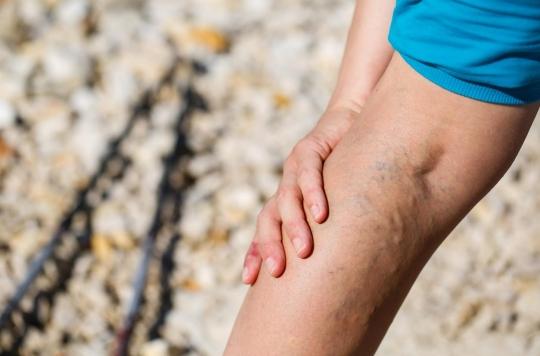The risk of developing a venous disease before the age of 35 is greatly increased in the event of heredity linked to the father or the mother.

- The frequency of venous disease before the age of 45 is multiplied by more than 2 in the event of heredity
- This disease is transmitted by both the father and the mother and affects both boys and girls equally.
- In case of heredity, follow-up and early management are recommended
The figures speak for themselves: among those under 35, the frequency of venous disease is multiplied by 2.6 when the parents are affected and it is also multiplied by 2 among those under 45 in the same case. It is therefore important to find out from your ascendants to find out if they suffer from heavy legs, varicose veins or ulcers, which are the most classic signs of venous insufficiency, which affects 18 million people in France.
It is a study carried out on 120,000 patients living in 24 countries which has made it possible to establish this statistic of the frequency of venous disease linked to heredity, which ranks by far as the first risk factor for this disease. disease. “This is the most powerful and serious factor and young people with one parent, and even more so if both parents, suffer from venous disease must be monitored regularly and taken care of as soon as possible.confirms Doctor Vincent Crébassa, doctor, phlebologist.
A chronic and progressive disease
Because if the venous disease is for some “not a real disease” in the sense that it would only be responsible for phenomena of heavy legs or simply disabling on the aesthetic level when varicose veins appear, it deserves on the contrary the greatest attention: this disease is chronic, that is to say that there is no cure. Above all, it is progressive, that is to say that its symptoms and manifestations worsen over time if it is not taken care of. The risk can go so far as to be life-threatening when the venous disease causes phlebitis which, themselves, can be the cause of pulmonary embolisms which cause ten thousand deaths per year in France, even if all pulmonary embolisms are not due to worsening venous disease.
Passed on by both father and mother
The hereditary part in the triggering of this disease is all the more important as it exists in all cases: the father as the mother can transmit it to a girl as to a boy, the equality of risk being perfect between both sexes. Even if we observe a slightly more present expression in women due to hormonal impregnation.
Above all, since no one can deny their heredity, it is necessary when the disease is present in the family to act on other risk factors which, on the other hand, we have the power to modify. The most important of these factors are two things that are often linked, being overweight and a sedentary lifestyle. Regular physical activity and monitoring of BMI (body mass index) are therefore essential in the management of this disease.
.

















